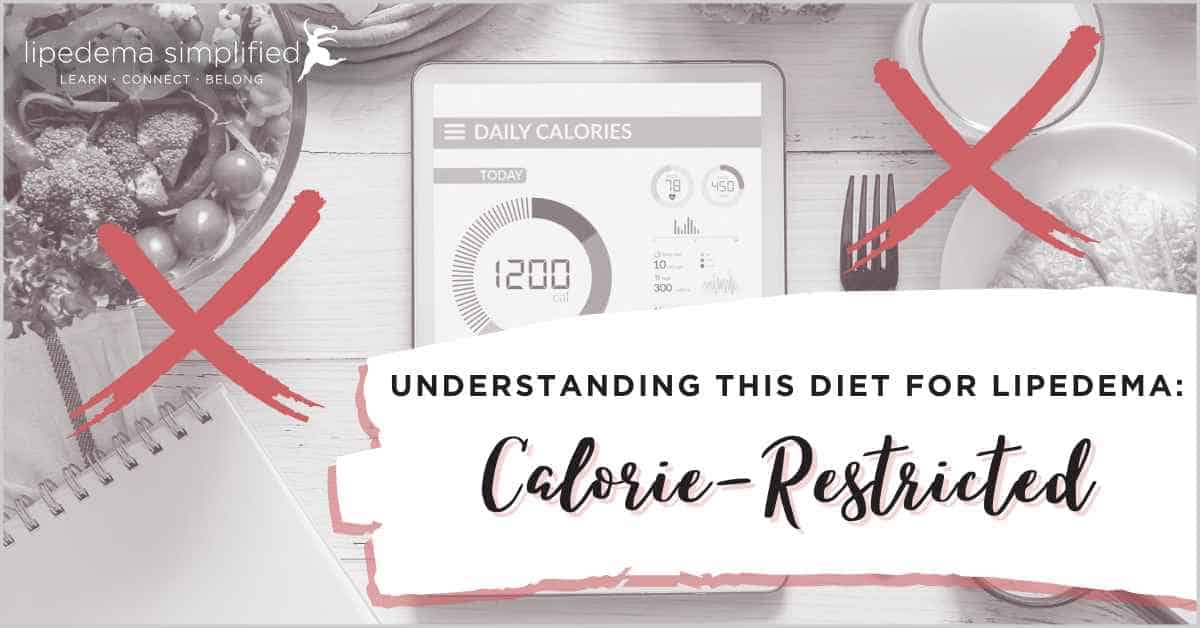
Today, I’m excited to introduce to you a paper by researchers at Wroclaw Medical University in Poland, entitled, Comparison of actual and predicted resting metabolic rate in women with lipedema. It was published in the journal Lymphatic Research & Biology in March 2022. I am familiar with one of the authors of this paper, Dr. Andrzej Szuba, who has published many papers about lymphedema and lipedema.
Definition of Terms
Before going into detail about this paper, let us first define some terms for better understanding.
Resting Metabolic Rate (RMR) – actual and predicted; This is the amount of energy expended, or calories needed, to maintain bodily functions when at rest over a 24-hour period. While we can measure an individual’s actual RMR, we can also predict what an individual’s RMR will be using the calculation described below.
Total Energy Expenditure (TEE) – All the energy the body needs for normal bodily functions as well as for physical activity. RMR accounts for 60-75% of the total energy expenditure of an individual.
Calculating RMR – RMR can be estimated by using an equation based on age, height, weight, and body composition, but the authors state that this is much more accurate with healthy individuals. They wanted to see if the predicted RMR using calculations was close to the actual RMR in women with lipedema.
Now let’s take a deeper look into the paper.
What was the aim of the review?
The authors believe that in order for women with lipedema to lose weight, a calorie-restricted diet based on an accurately predicted resting metabolic rate for each individual is essential. Therefore, this study aimed to compare actual RMR with predicted RMR in women with lipedema and to determine if there is an association between individual anthropometric measurements, such as age and weight with an individual’s actual RMR.
Who were the participants?
108 women with lipedema were included in this study. People were excluded if they were male or if they had a condition that kept them from using a bioelectric impedance device to measure body composition (such as pregnancy, metal implants, or a pacemaker).
The average age of the participants was 44 years, the average BMI was 32, and the average waist-to-hip ratio (WHR) was .83. The authors state that according to the World Health Organization, the normal WHR for women is .85 or less, but because of the significant disproportion of hip girth compared to the waist, this may not be an accurate predictor of health risk for women with lipedema. (FYI: Many researchers studying lipedema have suggested that using WHR gives more information than BMI – a weight and height calculation – because WHR can say more about where on the body the fat is deposited.)
Now let’s take a look at the measurements this study used.
Measurements
Waist measure. The average waist circumference of participants was 96 cm. According to the WHO, a waist circumference greater than 88 cm indicates abdominal obesity and a significantly increased health risk.
Actual RMR. FitMate WM device was used to measure actual RMR. The participants would put on a Fitmate WM face mask and be measured for 10-20 minutes.
Body Composition. The TANITA HR-001 analyzer, a bioelectric impedance device, was used to measure body composition.
Predicted RMR. The predicted RMR was calculated for each individual using body composition and anthropometric measures that I mentioned previously.
What were the results?
The average actual RMR was approximately 1,700 calories per day. The average predicted RMR was approximately 1,300 calories per day when calculated with the Tanita body composition analyzer. The highest predicted RMR was approximately 1,900 calories per day.
All predicted RMRs were statistically very close to the actual RMR when equations were used, but the correlation was much weaker when the body composition analyzer was used. The authors point out that bioelectric impedance devices are less accurate as the BMI increases as they tend to underestimate the percent body fat with higher BMIs.
What are their conclusions?
The authors state that their study showed a weak correlation between predicted RMR and actual RMR in patients with lipedema. RMR that was calculated using predictive equations was significantly lower than RMR measured with other methods. Because bioelectric impedance devices are expensive and are not widely available in clinics, predicting RMR using equations based on anthropometric measures may be more feasible for clinicians.
Takeaways
There is quite a bit of discussion and disagreement about whether or not a calorie deficit is needed for weight loss. Whether or not this concept is substantiated and proven true in the future, at Lipedema Simplified we believe that calorie restriction without regard to the macro- and micronutrient composition of the diet won’t result in healthy weight loss, even in the general population. For women with lipedema, calorie restriction (particularly with a very low-fat diet composition) will usually result in fat loss only in the trunk, head, and neck and limited or no fat loss in the limbs. Even so, if RMR and TEE can be accurately predicted for patients with lipedema, then this may be useful in the context of a ketogenic or carbohydrate-restricted diet.
For more updates on the latest research regarding lipedema, check out Lipedema Simplified’s Flash Briefings. It’s our daily mini-podcast where we share tips, tools, and research pertaining to Lipedema.
~ Leslyn Keith, OTD, CLT-LANA
Board President, Director of Research | The Lipedema Project
